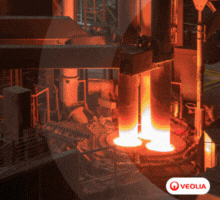AISI Releases Expanded Report on U.S. Indirect Steel Trade
10/10/2007 - The American Iron and Steel Institute has updated its analysis of U.S. indirect steel trade, a report that identifies the volume and value of steel imported and exported between the United States and 11 major countries and four regions.
The American Iron and Steel Institute (AISI) has updated its analysis of U.S. “indirect” steel trade to include 2006. This expands the earlier analysis for years 1999-2005.
The Indirect Steel Trade report identifies the volume and value of steel incorporated in finished products in eight major consumer markets that were imported and exported between the United States and 11 major countries and four regions.
The newly expanded report shows that U.S. indirect steel imports hit a new high of 39.8 million net tons in 2006—an 8% increase since 2005 and a 22% increase since 2000. U.S. indirect exports of steel also reached a new high of 20.6 million net tons in 2006, a 2% gain vs. 2005 and up 15% vs. 2000. Since indirect import gains outpaced the rise in indirect exports, the indirect steel trade deficit worsened in 2006 to 19.2 million net tons—15% greater than 2005 and only 4% below the record year of 2002.
According to AISI, America’s growing deficit in indirect steel trade serves as an ongoing warning about the increasing long-term challenges facing domestic manufacturing. For the automotive sector—which remains the single largest source of indirect steel imports—the indirect steel trade deficit grew to 9.5 million net tons in 2006, after being relatively stable in 2003-2005. However, while the indirect steel trade deficit for this sector rose modestly from the 2003-2005 sector average of 8.7 million net tons (which was 22% below the sector deficit in 2002), the indirect steel trade deficit in 2006 remained well short of the sector’s record deficits in 2001-2002. This decline reflects in part the increasing automotive production in the United States, largely by non-domestic producers such as Toyota, Nissan, Honda and Hyundai, which have significantly expanded the scope and scale of their U.S. operations. These companies rely mainly on domestically produced steel.
While the automotive sector’s indirect steel deficit since 2002 is one positive development, the significant overall deficit in America’s indirect steel trade highlights continuing structural problems for U.S. manufacturing. Of particular concern to domestic steelmakers, says AISI, is the fact that U.S. indirect steel imports from China last year (6.1 million net tons) increased 20% from the level in 2005. Moreover, the 5.5-million-net-ton indirect steel trade deficit with China in 2006 was the largest deficit with any country, and was 3.9 million net tons greater than in 1999.
“China has the world’s most heavily subsidized steel industry and a huge excess of inefficient steel capacity,” said Andrew G. Sharkey III, President and CEO of AISI. “Its mercantilist model of government subsidies, currency misalignment and export-led growth extends well beyond steel to include downstream producers throughout the Chinese manufacturing base.
“Because no U.S. manufacturer, regardless of how efficient it is, can compete against the Chinese government, this model of economic development represents a growing threat to the U.S. steel industry, the American manufacturing base (our domestic customers) and U.S. national security,” continued Sharkey. “AISI therefore joins with other U.S. industries in urging the adoption of a pro-manufacturing U.S. policy that has at its core more effective laws against unfair trade. The place to start is with passage into law this year of strong China trade legislation,” concluded Sharkey.
AISI has been publishing data on U.S. indirect steel trade by world areas and steel-consuming markets expressed in tons of steel since 1984. These reports provide data on the total amount of indirect steel trade each year in the U.S. economy, and show the main sources of foreign competition faced by major steel-using industries in the United States. This latest report includes detailed data for the last seven years (2000-2006).



.jpg?lang=en-US&ext=.jpg)
-(1).gif?width=220&height=200&mediaprotectionhash=8011a71ede637cd523c67b1296fc49e6151560fde821a46f29cc85998cc76615&ext=.gif)



